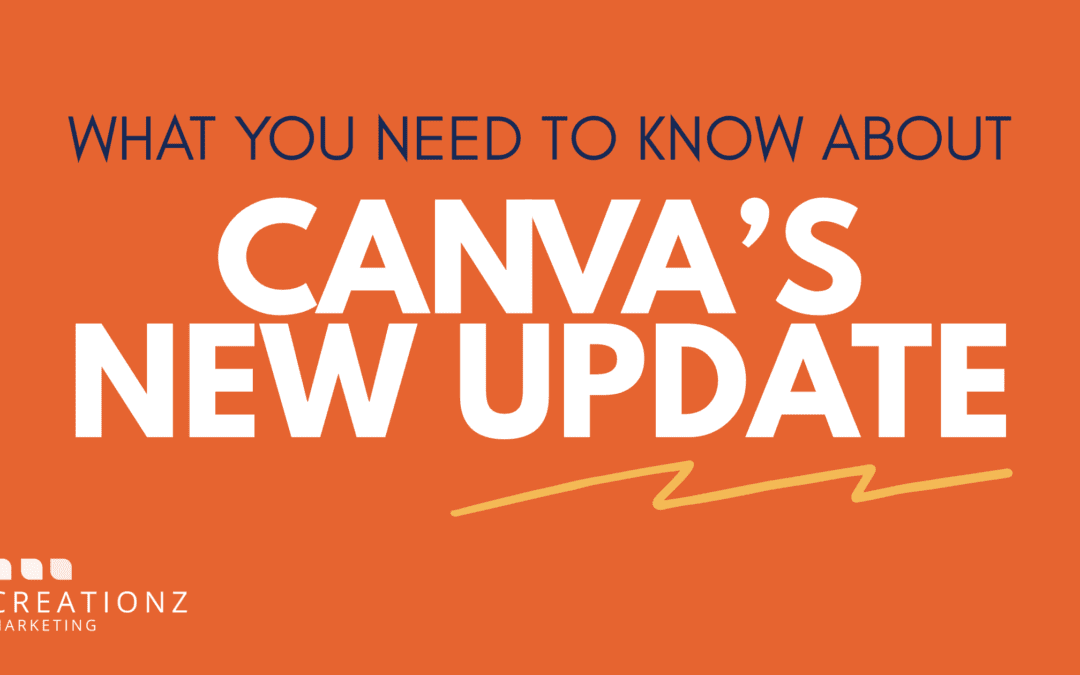
by admin | Jun 30, 2025 | Social Media
Let’s be honest. Keeping up with social media can feel like a full-time job. For many business owners, it’s not the job they signed up for.
You’re spinning multiple plates. Between operations, sales, customer service, and everything else on your agenda, finding time for engaging posts, trending content, and consistent scheduling often becomes a low priority.
So, can you actually outsource your social media marketing effectively?
This blog will help you explore the pros, cons, and key considerations, so you can make the right decision for your business.
The Benefits of Outsourcing Your Social Media
More Time to Focus on What Matters
Time is the number one reason clients come to us. Creating quality content takes hours. Outsourcing means you can get back to running your business while your social media presence is managed professionally behind the scenes.
Yes, we know tools like ChatGPT can help generate content – but does it sound like you? Is it written in your voice, with your tone, and does it feel authentic to your brand? That human touch matters, and your audience can tell the difference.
Access to Up-to-Date Expertise
Social platforms are always changing. Algorithms, features, formats – they shift constantly. A social media partner stays on top of these updates, so you can benefit from current strategies rather than relying on trial and error.
Take Instagram’s recent grid change, for example – from 1:1 (1080×1080) to 4:5 (1080×1350). We’re on top of it. From exploring platforms like Threads or Bluesky to keeping your content aligned with the latest trends, we make sure your business stays relevant and visible.
Consistent, Professional Content
Many business owners post inconsistently. Outsourcing provides a steady, reliable flow of content that builds your brand presence, keeps you front of mind, and helps you grow over time.
Strategic, Goal-Driven Marketing
Posting just for the sake of it rarely delivers results. Professional teams ensure that every piece of content supports a wider marketing strategy. Whether you want to generate leads, build awareness, or strengthen customer relationships, your social media becomes a strategic tool, not a guessing game.
The Common Concerns
“Will they understand my brand?”
With the right agency, absolutely. At Creationz Marketing, we know that no two businesses sound the same and they shouldn’t. A small family-run business or a solo entrepreneur won’t have the same tone of voice as a large corporate brand. And a legal firm will communicate very differently to a quirky coffee shop.
That’s why we start every partnership with a deep-dive discovery session. We get to know your tone, audience, goals, and what makes your business unique. The result? Content that genuinely sounds like you and resonates with the people you want to reach.
“What if I don’t get results?”
Marketing should be measurable. That’s why we build in regular reporting, data tracking, and review calls. We also tailor packages to your goals and budget, so you know exactly what to expect and how your investment is performing.
Plus, we give you access to a built-in analytics dashboard, so you can check your performance 24/7 – no guesswork, just clear data.
“I don’t know what I need yet”
That’s very common. Many clients know they need help, but they’re unsure where to start. That’s why we developed a free Digital Marketing Quiz. It gives you a personalised report in minutes, helping you understand what’s working and where there are gaps.
Things to Consider Honestly
- Your input still matters. While we take social media off your hands, we still need some input from you. Your vision, voice, and direction are important, and we work in partnership to keep everything aligned.
- One-size-fits-all rarely works. Your business is unique, so your content should be too. Our services are always bespoke, not pulled from a standard template.
- Results take time. Organic social media builds brand trust and community over time. It is powerful but not instant. We focus on meaningful, sustainable growth.
Is Outsourcing Right for You?
Ask yourself these questions:
- Do you struggle to post consistently?
- Are you unsure what’s working on your social channels?
- Do you find it difficult to keep up with the latest platforms and trends?
- Would you prefer to focus on your core business activities?
If you said yes to any of these, outsourcing could be a smart move.
Book a free, no-obligation call with the Creationz Team – in just 30 minutes, we’ll help you understand what’s right for your business.
What Should You Do Next?
Start by understanding your current digital strengths and weaknesses. Our free Digital Marketing Scorecard gives you instant clarity and suggestions for improvement.
➡️ Take the Quiz
➡️ Book a Free Call
At Creationz Marketing, we’ve helped businesses across legal services, coaching, education, manufacturing, and more to manage their marketing with clarity and confidence.
✅ Rolling Monthly Contracts: No long-term tie-ins.
✅ Graphics-Only Packages: Great if you’ve got the words but need the visuals.
✅ Monthly Trello Boards: Giving you visibility and space to post your own updates.
Whether you need one-off support, a full strategy, or monthly management, our team is ready to help you get your social media working for you – not the other way around.

by admin | Apr 16, 2025 | Creationz News
Canva has just released a big update filled with new tools aimed at making content creation easier and more efficient – especially for small business owners, marketers, and creatives. Highlights include Canva Sheets for data-led visuals, AI tools to speed up content creation, campaign management features, and improved design formatting options.
We’ve taken a look through the key features, and here’s our honest take on what’s useful, what’s coming soon, and what to keep an eye on 👇
📈 Canva Sheets – Coming Soon
Canva Sheets is designed to help you create sleek, data-led visuals directly within Canva – perfect for reports, infographics, and content-heavy posts.
👉 Our take: It looks like a great addition for visualising data quickly, but let’s be honest – Excel is still essential in most business environments.
One of Canva’s launch taglines says:
“With Magic Formulas, you’ll never need to memorise a single formula again.”
🙃 How mind-bending is that?
Here’s our word of caution: there’s a real risk of a new generation entering the workforce without ever understanding the fundamentals behind the spreadsheets they’re using. Cross-compatibility matters. You should be able to pick up a spreadsheet in any software – Excel, Google Sheets, Numbers – and know how it works.
🧠 Canva isn’t king. Learn the basics. Stay curious. Don’t become complacent in the face of AI magic.
We’ll share more once this new feature is live. Keep an eye on our socials for updates!
🤖 AI Features – Use With Intention
Canva now offers AI tools to help generate captions, edit images, and even write content – great for speeding up the creative process.
Our advice: It’s handy, but don’t become over-reliant. Learn the skills behind the tools.
You’re still your best creative asset.
Canva Code – Coming Soon
One of the most intriguing new features, Canva Code aims to let you build interactive content – like quizzes or gamified experiences – with no coding required.
We’ll be testing this one as soon as it drops.
Typography Tools – Finally!
Long-awaited upgrades to kerning, ligatures, and text formatting are now here. It might seem small, but for design polish, this makes a big difference.
⭐ Our favourite feature of the update so far.
One of Our Favourites: Multi-Format Design + Website Publishing
One of the standout features in this update (and definitely a new favourite for social media managers) is the ability to design slides, social posts, print mockups – all in one space.
No more flipping between formats or juggling file versions – everything is kept together, perfectly in sync.
✨ And just to make your pitching dreams come true? You can publish the whole thing as a website. Ideal for proposals, campaign overviews, or even event resources.
We know Emily will love this one – and we’re pretty sure a lot of you will too! A huge time-saver and one of the most practical upgrades we’ve seen.
🧠 Magic Studio at Scale – Kinda Mind-Blowing
You’ve designed a perfect square post… but now it needs to be 4:5 for Instagram, 9:16 for Stories, landscape for LinkedIn, a banner for the website, and somehow still look good on Facebook too?
We feel your pain.
That’s where Magic Studio comes in – combining Magic Resize with bulk creation tools (like Canva Sheets) to take one design and scale it across multiple platforms and formats.
✨ In theory, you can go from one design to many, instantly.
And honestly? It’s kind of mind-blowing.
This is the sort of upgrade that could save social media managers hours – but it’s also a reminder that design strategy still matters. Auto-resizing can only take you so far. You still need to tweak, refine, and make sure each version lands the way it should.
🎓 Learn With Canva – and With Us
Canva’s built-in tutorials are useful, but if you want personalised support with real-world marketing context – that’s where the Marketing Mentor Hub comes in.
✅ We offer hands-on training, live sessions, and mentoring to help you and your team get the most out of Canva (and beyond).
🎟️ We also run The Marketing Mentor Clinic – a free live session hosted twice a month where you can bring your questions, share your designs, and get advice from fellow marketers and small business owners.
👉 Get your questions answered for free and sign up here.
Final Thoughts
This update brings exciting changes, but not everything is available just yet. Canva Sheets, Campaign Central, and Canva Code are all marked as “coming soon.”
We’ll be sharing more as those features roll out – so keep an eye on our socials for updates!
And one final note for newer marketers or small business owners diving into tools like Canva:
Keep your skills transferable. Not all companies use Canva – and many still rely on Adobe, Excel, and other industry-standard tools. These foundations matter, especially as your business or career grows.
👩🏫 Need a hand getting more from Canva – or building the skills behind the tools? We offer tailored training, mentoring, and marketing support via Creationz and Mentor Hub.
📩 Want to build your Canva confidence? Let’s chat. We’re here to help you create smarter, not harder.










